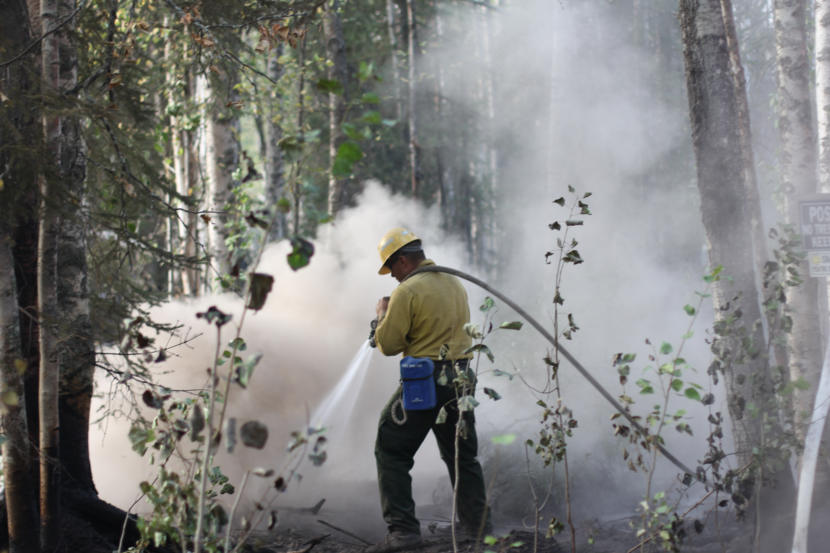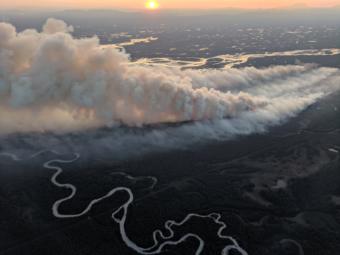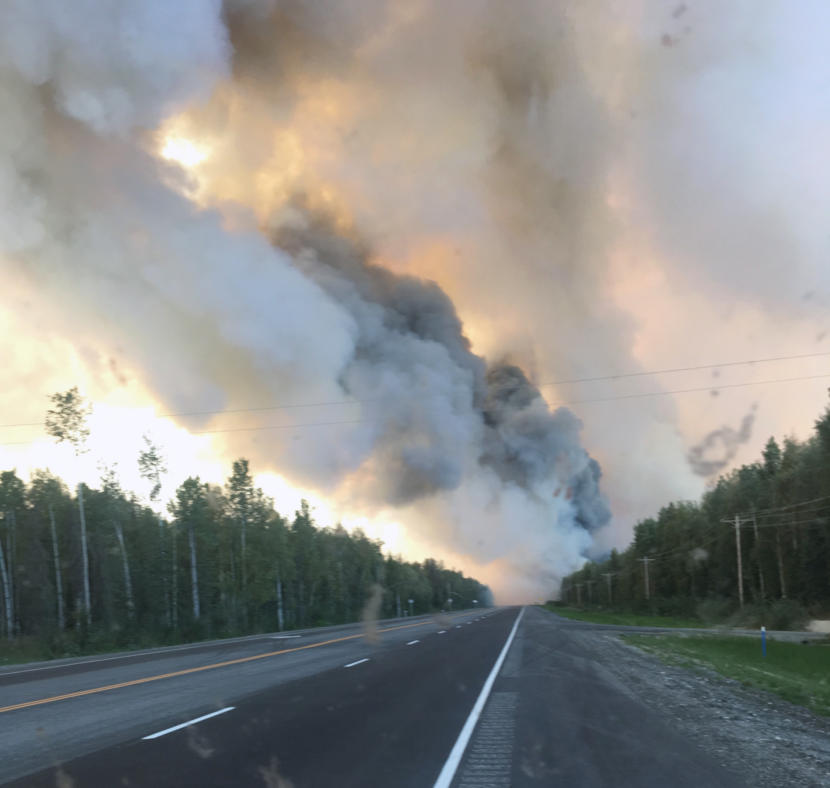
If wildland firefighters can be said to have a nemesis, that nemesis is black spruce. So much so that they have a nickname for it.
“Yeah, I’ve heard it, like, ‘gasoline on a stick,’” said Chris Moore, a fire behavior analyst who’s working with the team fighting the McKinley Fire in the Matanuska-Susitna Borough.
Wildfires can blow through black spruce in spectacular fashion, with flames blasting up in the air. But when fire reaches different kinds of trees, like white spruce, it slows down. And hardwoods, like birch trees, can be allies to firefighters.
“I don’t know if it’s lore, or just institutional knowledge in Alaska that most of the time, the hardwoods are a barrier,” Moore said.
But in the McKinley Fire, which sprung up after a record hot, dry summer, those usual rules haven’t always held, according to Moore.
Moore said that fire has still been spreading through the white spruce, many of which have been killed by a massive beetle outbreak, which has consumed hundreds of thousands of acres in the region.
Even the birch trees haven’t blocked the fire’s spread the way they usually do, Moore added. The birch have also been affected by an insect called the leaf miner, which, like it sounds, feeds on the leaves. In the Mat-Su, leaf miners have left huge swaths of birch trees with leaves that look brittle and brown.
But before blaming the insects for the wildfires burning around the state, fire experts said it’s important to consider the extreme warmth and drought in Southcentral Alaska this summer — and the fact that several fires that blew up recently were fueled by extreme winds. Those factors, experts said, are more influential than the spruce beetles and leaf miners.

“Almost all the studies I think I’ve seen, climate is the winner — that is, that’s what controls fire activity in most of these forests in Alaska,” said Jeff Hicke, a geography professor at the University of Idaho who studies the intersection of climate, insect outbreaks and wildfire. He added: “The marginal effect of having beetle kill is very small.”
It’s not that the insects have had no effect on the fires burning in Alaska right now, experts said. It’s just that the influence of the heat, drought and winds are much more pronounced.
“I haven’t heard someone specifically on the fire or someone that has more on-the-ground time here say: ‘Because of the leaf miner, this fire was more explosive or harder to put out or anything like that,’” Moore said. “It just was noted that the hardwoods are not a barrier to fire spread like they normally are. So, I’m just equating that to how dry it is here in Southcentral.”
Scientists have established that the dead needles on recently killed spruce trees are more flammable, and it’s likely that those dead trees can dry out and catch fire more quickly in the spring, Hicke said. But, he added, wildfires and spruce beetle outbreaks have relatively little overlap, which has made it difficult for scientists to say definitively whether beetle-killed spruce are more fire-prone or burn more severely.
“The case studies are very limited,” he said.
One thing scientists do know is that spruce beetles fare better in a warmer climate. Spruce trees can get drought-stressed in those conditions, making it harder for them to fend off the beetles with sap.
Higher temperatures also make it easier for the beetles to survive the winter, and if it’s warm enough, they can shorten their life cycle to one year, instead of two years.

“All of a sudden the lid is off,” said Glenn Juday, professor emeritus of forest ecology at University of Alaska Fairbanks. “The spruce beetles are able to outrun their natural controls and they spread out in large insect outbreaks and kill a lot of trees.”
If all this talk of hotter weather and insect outbreaks sounds apocalyptic, experts say it is likely Alaska will see more wildfires, and more beetles, as the climate warms.
But that trend won’t continue forever, Juday said, because the spruce trees aren’t as effective at reproducing after multiple fires. Instead, the types of trees in the forest will eventually start to shift: There will be more of the hardwoods, which don’t burn as easily.
“You’ve got birch, and you’ve willows, you’ve got alders and you’ve got some aspen,” Juday said. “We’re studying that very closely, because it is now an unmistakable trend.”
Simulations, however, suggest that by the end of the century, it will be warm enough that even those hardwoods will start burning more readily.
